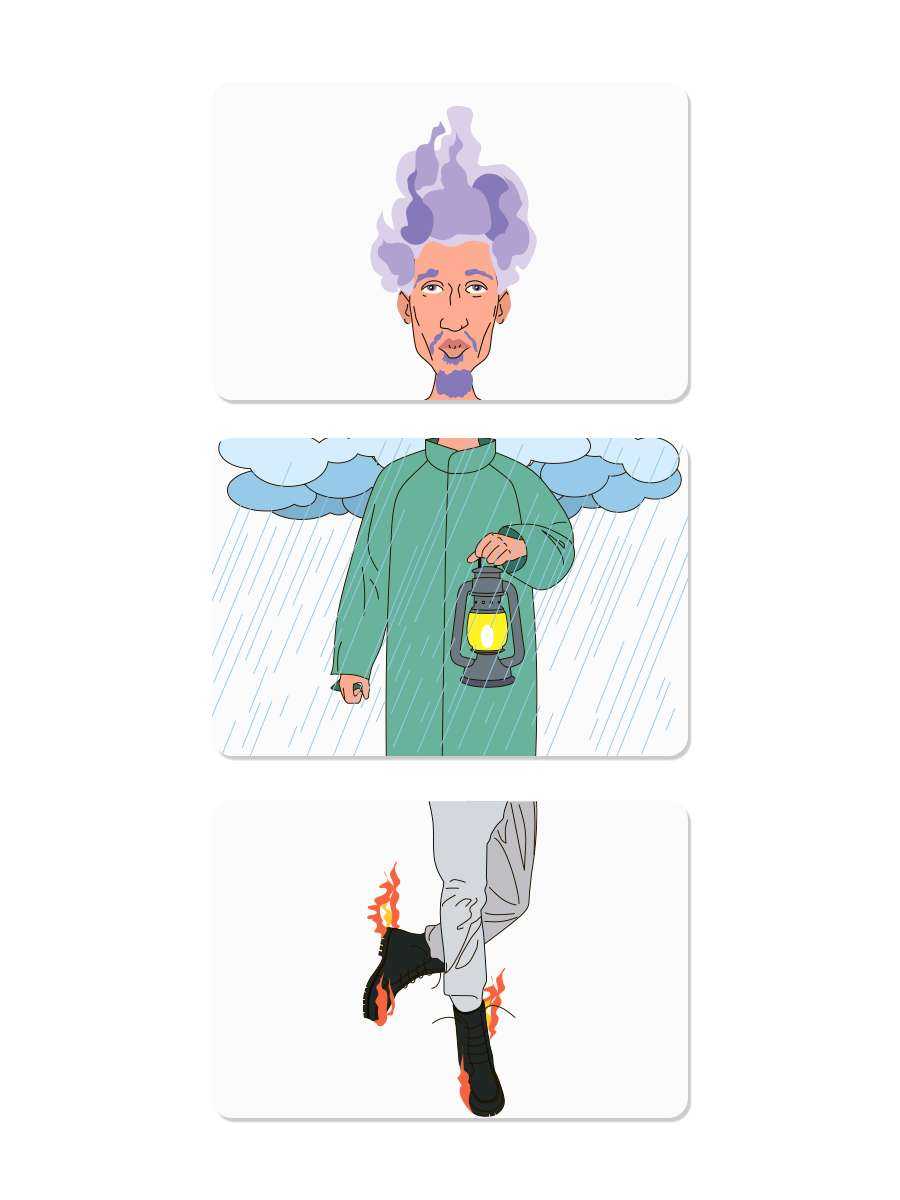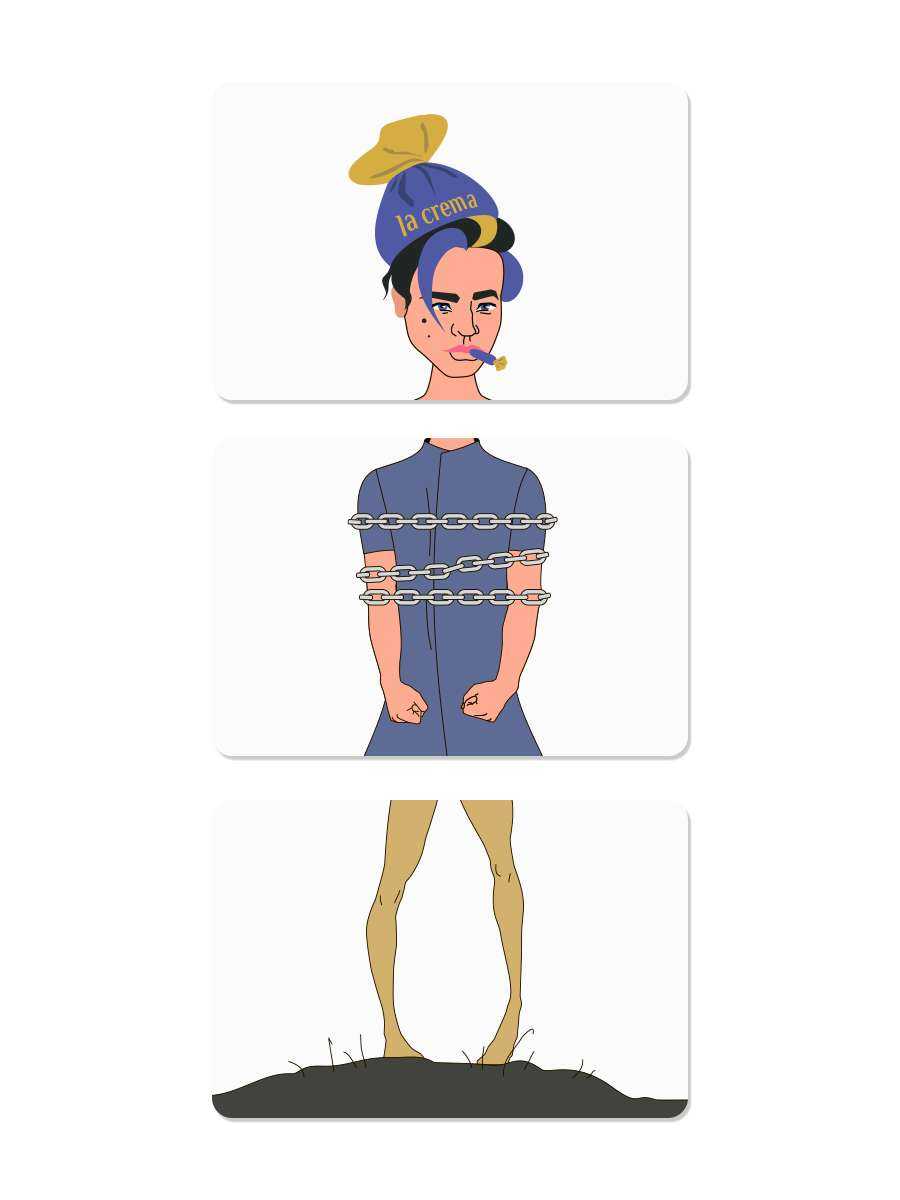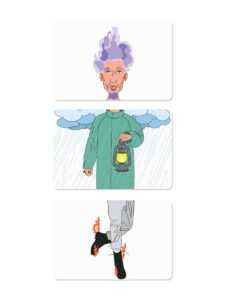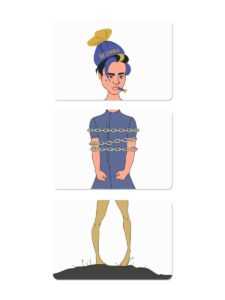You can purchase two “It’s in Me” decks (male and female) as a set at a nice price. Cards from these decks can be combined, which allows you to expand their functionality.
Author of the deck: psychologist and hypnotherapist Anastasia Kolendo-Smirnova.
Artist: Natalya Chernyavskaya.
Contents:
- 90 cards
- instructions with exercises
- Packaging: tight box.
Deck of metaphorical cards “It’s in me. Male Images” is a continuation of the “It’s in Me” deck for working with women, and is also an independent deck for working with men.
Also, the deck is easily combined with any MAC and can be used with classic standard techniques used when working with associative metaphorical cards.
The deck allows you to:
- clearly formulate the client’s request and set the goal of therapy;
- get moving in solving the problem;
- analyze and indicate the direction in working with psychosomatic disorders;
- monitor and treat destructive thoughts and actions;
- work with internal conflicts and harmonize interactions between subpersonalities.
EXERCISE. FIRST CONSULTATION
This exercise helps to formulate a request and determine the purpose of therapy.
EXERCISE. WORKING WITH PSYCHOSOMATICS
Helps to study the psychological causes of the symptom and outline the path to getting rid of the psychosomatic disorder. The client is asked to find, among the open cards, an image in the area of the body where the symptom manifests, an object that metaphorically reflects sensations in the body. Next, using questions, the connection between this metaphorical image and the client’s life situation is analyzed. Then you are asked to find a picture of what preceded the appearance of this symptom. Since illness is a powerful signal, it is usually preceded by another harbinger of problems in a person’s emotional sphere. This is its metaphorical meaning that we are asked to find. In this way, they find out what the psyche could not cope with and “turned on the help” of the body. Next, the steps of therapy are determined to solve the problem that was a harbinger of the symptom.
EXAMPLE OF WORK #1
The client has a leg pain. He selects an open picture where a weight is tied to his feet. During the discussion, it turns out that the client experiences heaviness in the leg, stiffness, and inability to move. We translate this metaphor into what is happening in the client’s real life situation: “What or who is putting pressure on you? Who or what has chained you and what are you chained to in your life?” etc. Next, you are asked to choose what preceded the appearance of pain in your leg: “When your leg didn’t bother you, what happened to you emotionally? What feelings and thoughts did you experience before the symptom appeared?” The client chooses the picture “torso”, where there are many hands, explaining this condition by the fact that she grabbed onto everything and did not succeed in anything. This condition could be “solved” with the help of “stopping”, “being constrained by weights.”nbsp;Next, the client discusses in more detail what exactly he tried to do during that period, what did not work and why. Therapy begins with solving exactly that condition, putting everything on the “shelves”, setting goals, removing fears and finding resources.
EXAMPLE OF WORK #2
The client complains of abdominal pain. Selects a card with a spider in its body. He describes this state as if there is a lump inside that is devouring him from the inside. Next, we ask you to select a card about what the person experienced in their life before the symptom appeared. The client says that it was such a longing in the heart, the same cobweb when the marriage broke up. Further, the work is based on feelings about divorce, complexes, fears, attitudes, forecasts and scenarios related to personal relationships.
































Reviews
Clear filtersThere are no reviews yet.